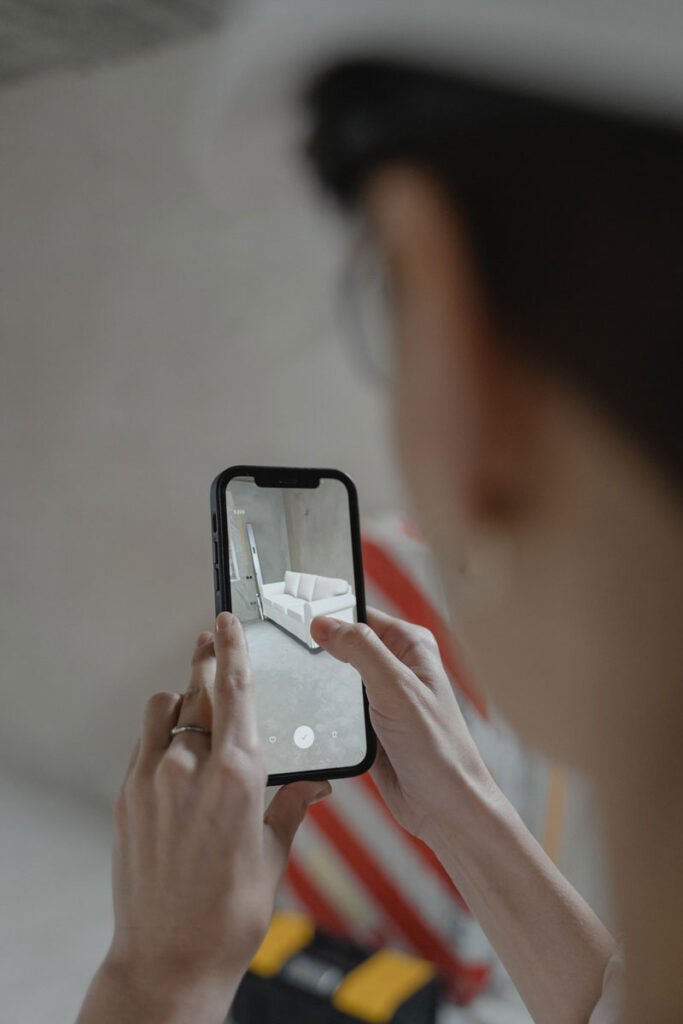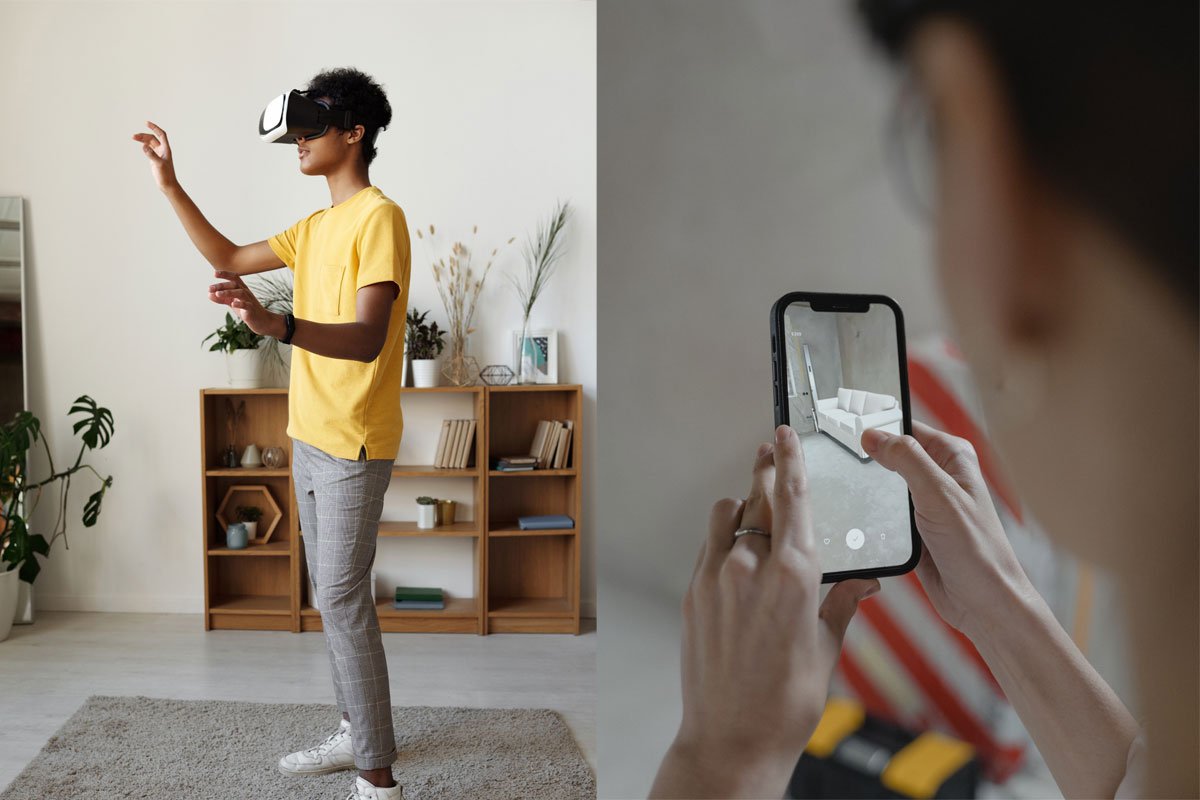11 Ways AR and VR revolutionize the marketing experience
The global virtual reality and augmented reality market are expected to grow over two times by 2024. The technological adoption has rapidly increased to 800 million currently and is further expected to hit 1.73 billion in the coming three years. As the global mobile phone user base drastically increased, marketers have grown keen to use Augmented Reality (AR) and Virtual Reality (VR) in marketing and advertising.
Augmented reality and virtual reality in advertising have already started transforming the digital marketing landscape. Considering the potential of virtual marketing, it is justified to say that AR and VR in marketing boost lead generation and conversion rates. Brands, in all industries, have started embracing the relatively new technology to empower their prospects with quality content and hence, influence their buying decisions.
How AR and VR alter the marketing landscape?
1. Try before buy
The craze for virtual reality lies in its ability to provide a life-like experience. Numerous brands started using augmented reality to enhance their consumer’s experience. For example, after Sephora successfully launched its first Virtual Artist app, which deployed AR in their marketing campaigns, various brands followed suit.
Brands like Ikea, Gucci, and Lenskart use AR in their apps and sites to provide a life-like experience of their products. Ikea allows consumers to see how their furniture looks in reality by just taking a snap of the room. Lenskart allows consumers to try glasses on their digital faces at a 360-degree angle.
2. App marketing
Consumers are very choosy about the apps they download. Until and unless it provides immense value, they do not deem apps worthy of their storage. AR and VR in marketing can provide leverage to brands and inspire the audience to download the apps.
Almost all brands now have their own apps. From Nyka and amazon to Ikea and Lakme, all brands use AR in their app content to attract their target audience.
3. Extended reality

As the pace of AR and VR is increasing each day, mixed reality has started offering solutions to modern-day marketing issues. Extended reality comes as another potential update to keep the customers hooked. As the ongoing pandemic disturbs the physical shopping experience of consumers, extended reality can compensate for out-of-store shopping.
With branded and unique content, 360-degree product representation, and high-quality images, augmented reality in marketing can dominate the marketing landscape soon.
4. Video marketing
With the increased interest in short videos, video marketing is on an all-time high. Virtual Reality is one reason for the sudden shift of interest of the consumers. Improved video quality enhances the consumer’s satisfaction.
Virtual reality in marketing is predominantly used in video marketing. From brand live marketing sessions to occasional video marketing content, virtual reality is almost ubiquitous.
5. Digitized content
The rise of digital technology has given a much-needed impetus to conventional marketing. But, it also transformed the conventional marketing style. Billboards and TV marketing are still prevalent but the content format has completely changed.
The interactive “Burn that ad” of Burger King is a good example. “The social swipe” marketing campaign for a charity cause created a lot of excitement on social media, despite being an old one.
6. Filters
Filters are present on all social media & messaging platforms nowadays. This augmented reality technology has garnered a lot of attention from the audience that eventually all tech platforms had to launch their own.
If you intend to incorporate a virtual reality element in your marketing campaigns, there is no other better option than filters. Genz and millennials are equally attracted to filters. Hence, this AR marketing tactic holds maximum stakes in making your ads successful.
7. E-commerce

Due to a lack of technological expertise, brands had to rely upon third parties to incorporate technical elements in their e-commerce site. The scene has changed now. AR and VR tools are readily available to the ordinary public that can be readily deployed for their commercial purposes.
They can even be personalized for their marketing purposes. Hence, Augmented reality and virtual reality in marketing are now easier for brands than ever before.
8. Interactive marketing
Gone are the days where marketing used to be a one-sided thing. Now, all brands seek consumer interaction and engagement. Augmented reality and Virtual reality increases the probability of customer engagement.
Augmented reality by nature is interactive. For example, few brands are creating digital business cards for their businesses. These cards come with interactive buttons to allow the recipients to land on their social profiles with just a single click.
9. Amplify media relations
The advent of digital marketing has significantly reduced the hierarchical gap between brands and consumers. Virtual reality further narrowed down the communication gap. Recognizing the increased brand-consumer activity, almost all digital platforms improved their live interaction features to facilitate greater audience interaction on their platforms.
Hence, virtual reality in marketing can greatly reduce the historical gaps between businesses and consumers.
10. Digital tour
No one realized the potential of a robust digital infrastructure until the pandemic brought all business activities to a halt. Increased digital shopping during the pandemic helped businesses realize the potential of digital marketing and the latest innovations in marketing. Similarly, virtual reality in marketing further paved the way for digital tours of businesses.
Brands started transparently throwing glimpses into their business operations to the audience, which impacts the credibility and trust of the consumers.
11. Product marketing
Have you ever shopped online? Probably many times but has it been the case in the past too? Most likely not. It is because the digital product experience has never been so sophisticated earlier. The quality, material standards, and minute details of the products are clearly visible on the screens now. Hence, consumers do not find it hard to decipher the product standards, which was not the case earlier.
Augmented reality and virtual reality in marketing, therefore, is spearheading the entire digital shopping space. It is expected to further push the growth with more innovations in the virtual reality space.
Conclusion
Technology is becoming more immersive each day. That is why adapting to the new technology and marketing practices is a prerequisite for brands. Marketing entails engaging the audience and surpassing their expectations to build a marketable fan base online. Augmented reality and virtual reality, therefore, enhance the consumer’s digital experience.
Improved customer experience boosts brand recognition, reputation, and sales. Although it is just the beginning, statistics and projects already hint about the vibrant future of AR and VR in marketing. Even as modern consumers are expressing their interest in the digital arena, swift transformation is beneficial for brands and marketers.





